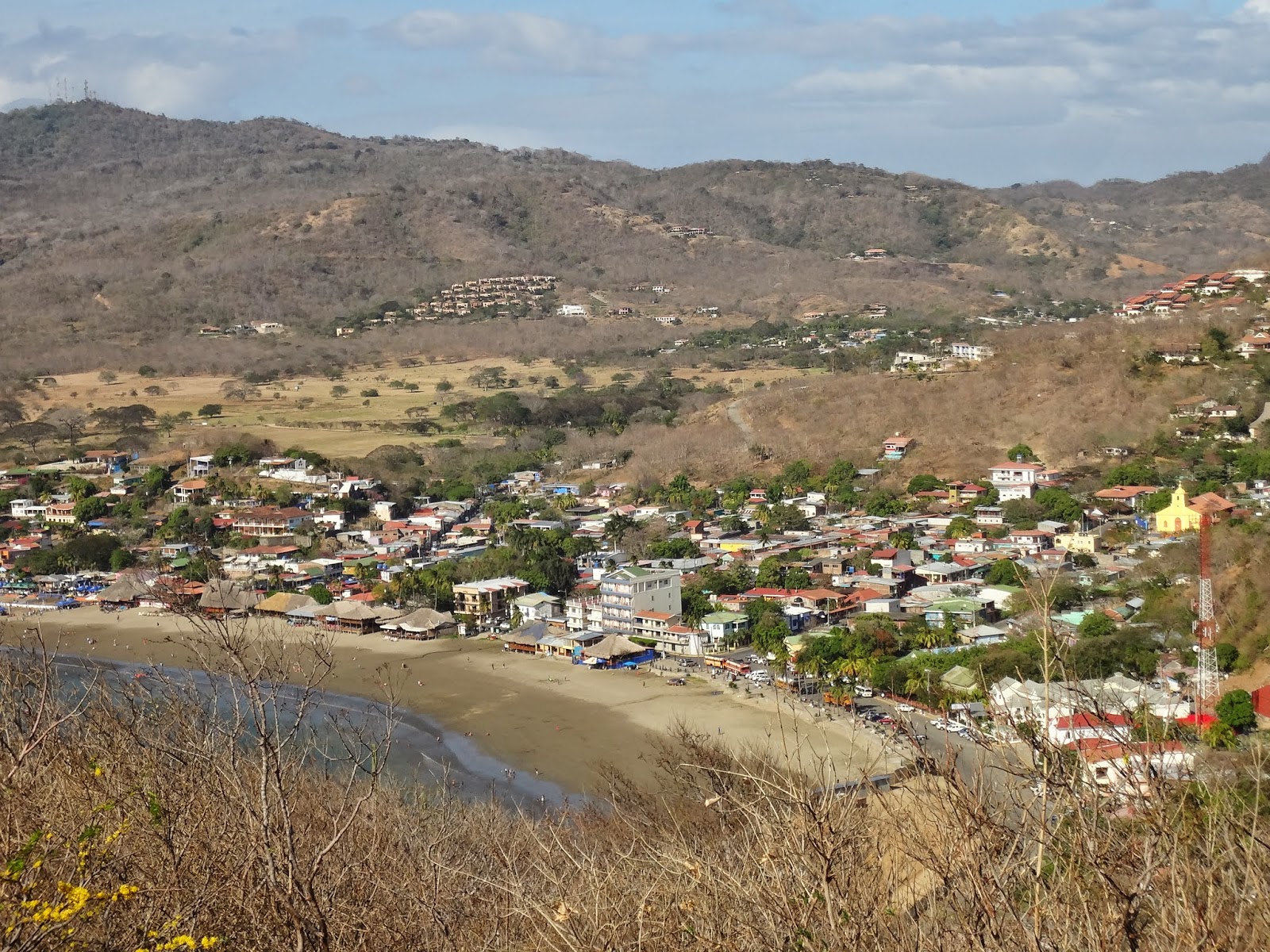Going to the market today was a little more of an event than usual....
After a lunch out, Chet and I decided to go to the market to get vegetables for dinner. We have been going to the market generally around 4 in the afternoon. By that time, the market is generally winding down. So we thought we'd go check it a little sooner than later today. As we walked down the street towards the mercado, we began to be aware of a commotion ahead. We passed two police diverting cars (but not pedestrians) from the road and then we saw it...smoke slowly creeping out of the upper story of the building that partially houses the market (some of the vendors have booths inside the building while others line the street next to the building). Then Chet pointed out the cause of the smoke. Electrical lines had somehow melted or snapped and were spraying sparks all over the tin roof where the sparks then rebounded to the wooden frame of the building. Within minutes, we began to see flames hungrily licking the upper story. As the fire began to rage, people stood in the streets watching the scene unfold or hurriedly packed up their wares, closing shop as quickly as possible. At a loss of what to do, we headed back to our hostel, only a block away. The hostel smelled horridly of a melted electrical smoke that had drifted over from the fire. We excitedly relayed the news to Wyatt...the market is on FIRE! 'Should we go check it out?' was his reply. And with that we grabbed our cameras and headed back out. After what must have been a half hour since the electrical lines started sparking, the power was finally shut off and the fire trucks finally arrived. By the time we'd gone back out to rubber neck and take pictures like the rest of the crowd, the flames had died out, but the building continued to billow a gnarly, noxious smoke (luckily the wind was blowing the smoke away from us!). After watching the progress for a bit, we decided to move on. Almost an hour or two later, we headed back. The building was roped off, but you could still walk in the adjacent alley where a few vendors had reopened for business. So we bought our veggies for salsa and went home. And that's that!
 |
| Smoke billowing out of the tall market place building down the street. |
Yesterday, we went to the craziest of all markets for a day trip. Renowned for its markets, Masaya is a town about 30 minutes away from Granada. Hot and sweaty from the ride on the chicken bus, we arrived in Masaya...in the middle of a gigantic, tent city maze of a market. It was crazy, overwhelming, and amazing. The smell was pretty intense too with a mixture of fish and meat that had been warmed by the heat. After walking around for awhile, trying to find our way through the never ending maze, we decided to walk to the local artisan market. Once again, everyone was selling similar things, but we all bought a couple souvenirs anyway. Later, we walked down to the water front, which was a very high cliff with a wonderful view of the crater lake below, Laguana Masasya. Unfortunately, we found out later that that lake is extremely polluted from the nearby city and factories dumping their wastewater there for many years.
Writing several days later.....
While in Granada, we took several other day trips as well as wondered around the beautiful town. One day, we headed up to Laguana Apoyo (another volcanic crater lake, but not polluted) for a beach day and rented some kayaks. Another day, we took an afternoon/night tour of Volcan Masaya. The volcano is still active and one of its craters spews sulfurous gases. The tour took us to see all the different craters (there are 4 different craters, but two are inactive), told us the history of the volcano and other fun facts, and took us into a lava tube/bat cave. It was all really cool and I'm glad we did the tour instead of going up by ourselves. Our other days in Granada were spent wandering the colonial style town. All of the buildings were very tall and colorful, and went right up to the sidewalk, making the town seem small and somewhat claustrophobic. But, if you got high enough up above the roofs, you could see that all the buildings had little courtyard areas and the buildings went much deeper into the block than one expected from first glance on the street.
One day while walking around we passed a barberia. On an impulse Wyatt and I decided to get haircuts. I pointed to a picture of the style I more or less wanted and away we went. The buzzer kept clogging up as my hair was rather long but the guy did a great job, finishing up with a flat-edged razor. It was probably the fastest, most professional, and least expensive (40 cordobas~$1.50) haircut I've ever had. With a large pile of hair on the floor, I left feeling lighter and very satisfied.
 |
| Church in Granada. Note the front is only a facade! |
 |
| All the buildings were so colorful there. |
 |
| Cathedral in Granada. |
 |
| Laguana Masaya |
 |
| Laguana Apoyo |
 |
| Active Masaya volcano. |
 |
| View of Granada and Volcan Mombacho from a church bell tower. |
Love,
Karen and Chet

































.JPG)





.JPG)

